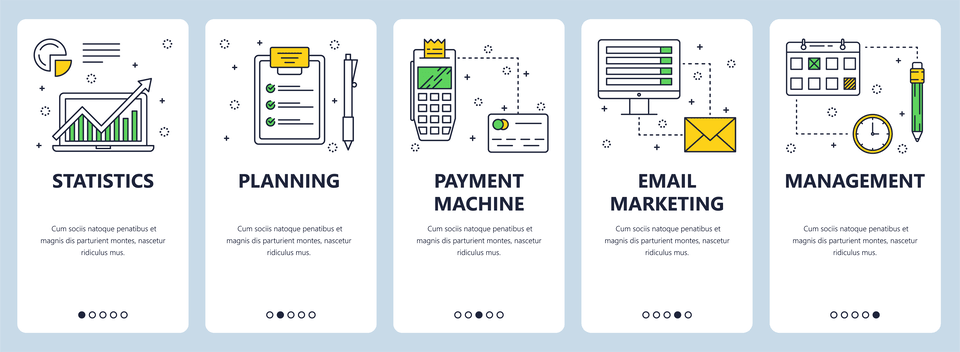
To illustrate, assume the same facts as above, except that the annual lease payment due at Dec. 31 is $150,000 for years 1–5, and $183,272 for years 6–10. The increased burden on the lessee does not stop there, as accounting for and maintaining the assets and liabilities created by each lease is required each period. The ongoing accounting for finance leases will be substantially the same as the existing accounting for capital leases; however, the accounting for operating leases will be different due to the assets and liabilities now recognized.

Recognize the Right-of-Use (ROU) Asset:
During this phase, businesses need to evaluate the financial implications of transitioning to ASC 842 and IFRS 16. This includes assessing the changes in balance sheet presentation, income statement effects, and key financial ratios. Understanding these impacts is essential for effective financial planning and communication with stakeholders. Finance and accounting teams must be well-versed in the new standards and understand the implications for financial reporting. Providing comprehensive training sessions and resources can help ensure that all relevant personnel are equipped to handle the changes effectively. ASC 842 and IFRS 16 retain a dual model for lessor accounting, similar to the previous standards, but with some refinements to align with the new https://www.bookstime.com/articles/business-taxes lessee accounting model and improve consistency in financial reporting.
Remeasuring Leases
- At the same time, the seller/lessee should derecognize the asset and account for the leaseback portion according to ASC 842 by recognizing a lease liability and a corresponding right-of-use asset.
- Some considerations exist within each standard to omit specific types of transactions from capitalization (i.e. short-term leases).
- The FASB, IASB, GASB, FASAB, and FRC have released new lease accounting standards over the last several years, which are ASC 842, IFRS 16, GASB 87, SFFAS 54, and FRS 102, respectively.
- They promote transparency, accountability, and consistency when recording and reporting lease transactions.
- The new lease accounting standards represent a significant shift in financial reporting, requiring organizations to recognize lease assets and liabilities on the balance sheet.
The interest income is calculated on the net investment in the lease, reflecting the lessor’s rate of return on the lease agreement. This ensures the revenue is matched with the periods benefiting from the lease, providing a more accurate financial picture of the lessor’s leasing activities. Having said that, under IFRS there is a single lease accounting method for lessees, so these conditions are more relevant for US GAAP, which clearly differentiates finance leases and operating leases. Let’s assume that the lease term is reassessed at the end of year 20X6 and extended to 31 December 20Y5.
- Similarly, straight-line rent expense is calculated by aggregating all rent payments and dividing them by the full contract term.
- For operating leases, the leased asset is still recognized as a fixed asset on the lessor’s books.
- This results in a front-loaded expense pattern, where the total lease expense is higher in the earlier years of the lease term compared to the straight-line expense recognition under previous standards.
- The lessee must have the right to obtain substantially all the economic benefits from the asset and direct its use.
Key Concepts of IFRS 16

The implementation of the new standards provided an opportunity for them to integrate processes and tools so all stakeholders have the same understanding of lease agreements and how the contracts affect the business. The new standards were implemented to enhance transparency into entities’ financial obligations. Each of the standards requires entities to bring most leases onto the balance sheet. Lessors are required to establish a lease receivable and an unearned revenue liability upon lease commencement.
- The concept of straight-line rent expense requires lessees to charge their total lease liability to expense on an even, periodic basis over the lifetime of the contract.
- This change enhances transparency and comparability of financial statements by providing a more accurate representation of a companys financial obligations.
- IFRS 16, issued by the International Accounting Standards Board (IASB), serves a similar purpose on a global scale, aligning the accounting treatment of leases with international financial reporting practices.
- These changes were driven by the need for more accurate financial reporting and to align with international accounting practices.
- If none of these criteria are satisfied, the lease is classified as an operating lease.
Can you provide examples of successful implementations?
Organizations must establish robust internal controls to monitor compliance with the new lease accounting policies. This includes regular accounting for lease audits and reviews to ensure that lease transactions are accurately recorded and reported. Effective policy development not only facilitates compliance but also enhances the transparency and reliability of financial reporting. System changes are crucial to accommodate the new lease accounting requirements.
What are my payment options?
One of the key challenges in implementing ASC 842 is the requirement to reassess and potentially modify existing lease agreements. Companies need to carefully analyze the terms and conditions of each lease and apply the new standard’s guidelines to recognize lease-related assets and liabilities accurately. Lessors will continue to classify leases as either finance leases or operating leases. Operating lease payments will remain as income, recognized on a straight-line basis.
More financial reporting resources
These leases are capitalized and presented on the balance sheet as assets, known as the right-of-use (ROU) asset, and liabilities, unless subject to any of the exemptions prescribed by the standard. This standard requires leases to appear in the balance sheet as right for use and liability. Additionally, it requires the disclosure of a company’s leased assets, the categorization of leases as either finance or operating, and reporting of the leases’ monetary values. Among other changes, these entities are now required to record both operating leases and capital/finance leases to the balance sheet, a major divergence from the legacy standards.

Leases Podcasts
These deposits are considered a separate financial asset at amortised cost petty cash under IFRS 9. As these deposits often do not bear interest, their initial recognition‘s fair value is less than the cash paid. This difference should be treated as an initial direct cost and added to the RoU asset (see a similar example with security deposit paid by a contractor). In this case, assume that there are no initial direct costs or lease incentives received, so the RoU asset at initial recognition equals the lease liability’s initial measurement, totalling $172,272. Another key difference between IFRS Standards and US GAAP relates to the treatment of leases whose payments depend on an index or rate – e.g. a lease with payments adjusted annually for changes in the consumer price index (CPI).
